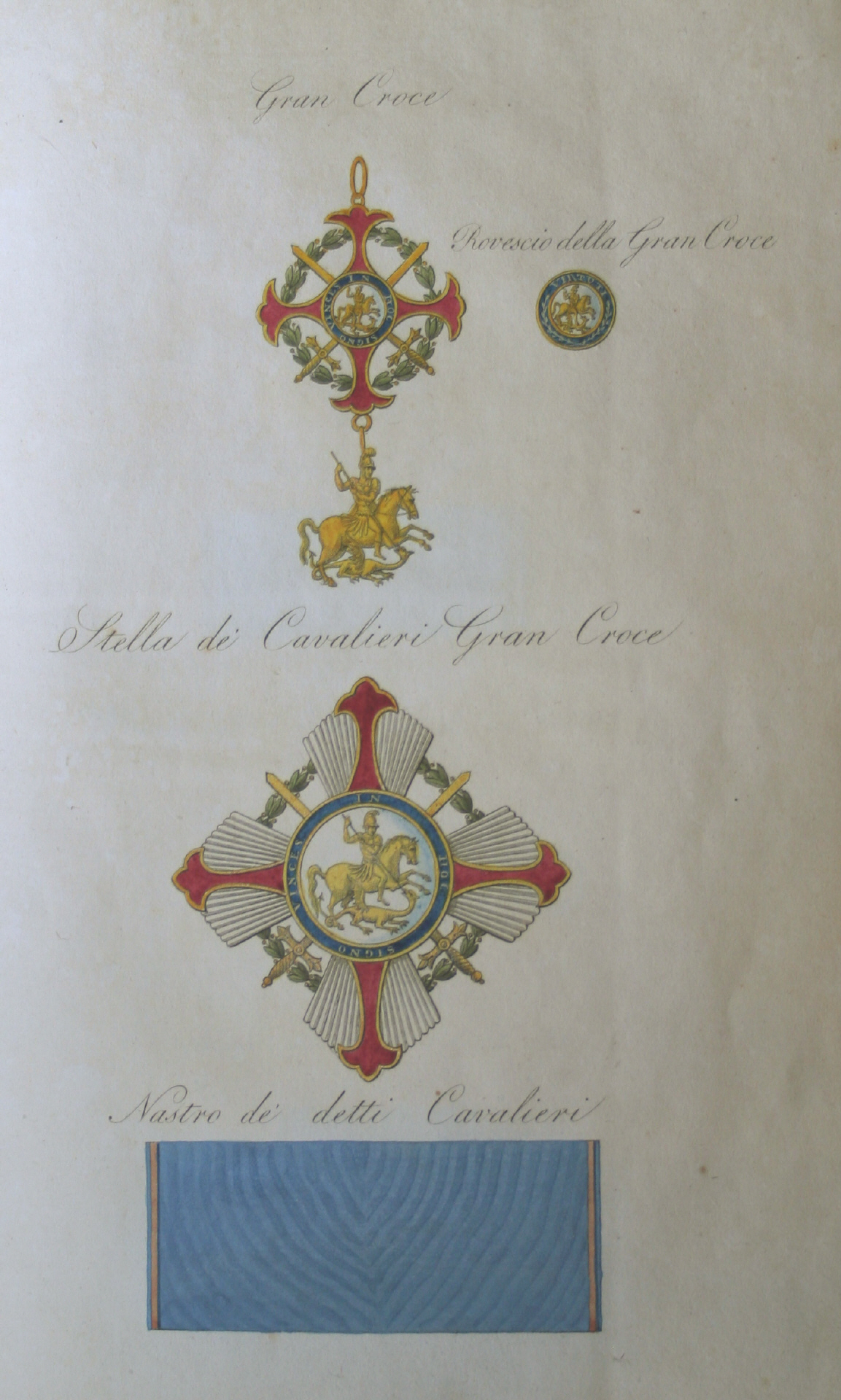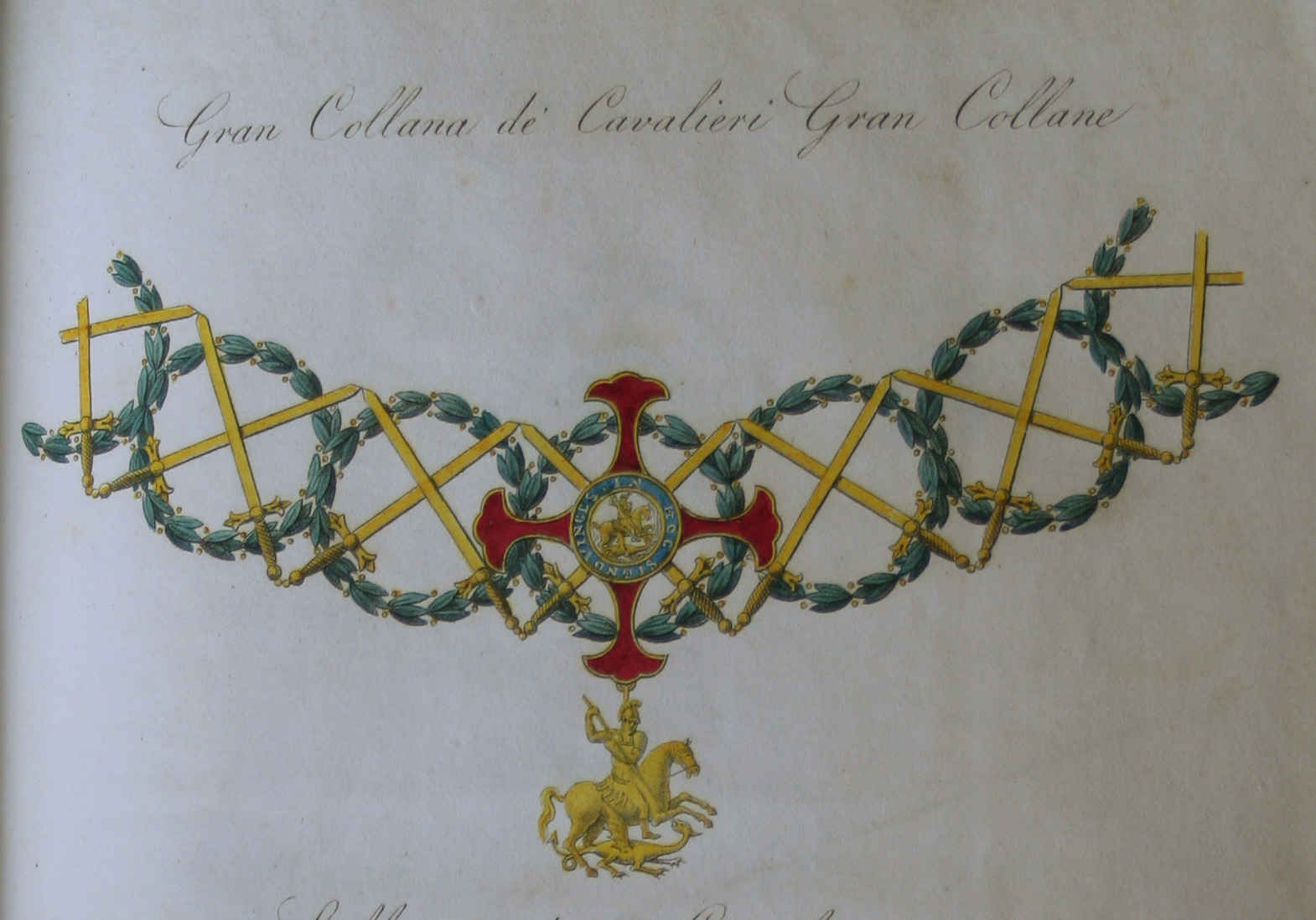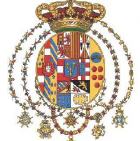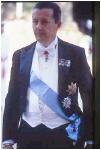Joseph Napoleon (elder brother of the Emperor) had founded the Order of the Two Sicilies, on 24 February 1808, to emulate his brother s Legion of Honour, in three classes: dignitaries (fifty in number); commanders (one hundred in number); and knights (six hundred in number); this Order was continued by Joachim Murat, their brother-in-law, after he and his wife Caroline became King and Queen in 1808 (when Joseph went to Spain). On the restoration of King Ferdinand III and IV, as Ferdinand I of the Kingdom of the Two Sicilies, all the institutions of the Napoleonic monarchy, including the Order of the Two Sicilies, were suspended, aside from the Napoleonic civil code which became the law of the new, united kingdom. Ferdinand, by a royal decree of 1 January 1819 to celebrate the reunion of the kingdoms, replaced the Napoleonic Order with the Order of Saint George of the Reunion, with himself as Grand Master, commanding that the members of the Order of the Two Sicilies should substitute their decoration for that of Saint George of the Reunion. There were originally seven classes (grand collar, grand cross, commander, knight of justice and knight of grace and two medals of gold and silver), but the first class was abolished by a reform of 28 September 1829. The grades of grand cross, commander and knight of justice were awarded to officers, and the gold medal to ordinary soldiers, for valour in battle or distinguished military service. The grade for knight of grace (for officers) and the silver medal (for soldiers) was awarded for distinguished service in war or after forty years service in at least two campaigns. The right to receive the award was authorised by a committee of examiners, the Chapter, nominated by the Grand Master and composed of a president grand cross and at least ten assessors.

The Order was governed by a magisterial deputation composed of the Grand Marshal (president), two grand crosses, and two commanders (assessors), two knights of justice and two of grace as secretaries. In the case of a major issue, the Grand Master could convene the Grand Council, composed of ten grand crosses presided over by the Grand Council aided either by the Grand Marshal or a grand cross nominated by the King. To link the Order with the ancient Constantinian Order, the badge was closely modelled on the Constantinian cross, with a roundel bearing the image of Saint George slaying the dragon in the centre, surrounded by the motto IN HOC SIGNO VINCES ( By This Sign Thou Shalt Conquer ) and the word VIRTUTE. Two crossed swords were imposed behind with the arms of the cross linked by a laurel wreath. The ribbon was the same as that of the Constantinian Order but with a narrow yellow stripe along the border. The grand cross decoration, with a gold Saint George slaying the dragon suspended from the base of the cross, was worn around the neck with the same cross mounted on a breast star. The commander s cross, identical to that of the grand cross but without the pendant Saint George, was likewise worn around the neck with a simplified breast star. The knight s cross (of justice and grace) was smaller; that of grace did not have the laurel wreath.
In spite of a decree of the King of Sardinia, dated 7 September 1860, purporting to declare the abolition of the Two Sicilies Merit Orders, both King Francis II (who awarded it extensively at Gaeta) and the Count of Caserta continued to give Saint George of the Reunion, the latter doing so for the last time in 1909. The heir apparent to the Two Sicilies Throne or Headship of the House holds the title of Grand Constable of this Order and successive Heads of the Royal House have maintained their right to the Grand Magistery. The decorations of the Order of St George of the Reunion cannot be worn conjointly with those of the Constantinian Order.









